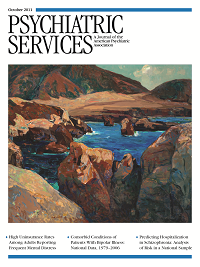Uninsurance Among Nonelderly Adults With and Without Frequent Mental and Physical Distress in the United States
Abstract
Objectives:
This research describes uninsurance rates over time among nonelderly adults in the United States with or without frequent physical and mental distress and provides estimates of uninsurance by frequent mental distress status and sociodemographic characteristics nationally and by state.
Methods:
Data from the 1993 through 2009 Behavioral Risk Factor Surveillance System, a telephone survey that uses random-digit dialing, were used to examine the prevalence of uninsurance among nearly 3 million respondents by self-report of frequent physical and frequent mental distress and sociodemographic characteristics, response year, and state of residence.
Results:
After adjustment for sociodemographic characteristics, uninsurance among adults aged 18 to 64 years was markedly higher among those with frequent mental distress only (22.6%) and those with both frequent mental and frequent physical distress (21.8%) than among those with frequent physical distress only (17.7%). The prevalence of uninsurance did not differ markedly between those with only frequent mental distress and those with both frequent mental distress and frequent physical distress. The prevalence of uninsurance among those with frequent mental distress only and those with neither frequent mental distress nor frequent physical distress increased significantly over time.
Conclusions:
Uninsurance rates among nonelderly adults with frequent mental distress were disproportionately high. The results of this analysis can be used as baseline data to assess whether implementation of the Affordable Care Act is accompanied by changes in health care access, utilization, and self-reported measures of health, particularly among those with mental illness. (Psychiatric Services 62:1131–1137, 2011)



